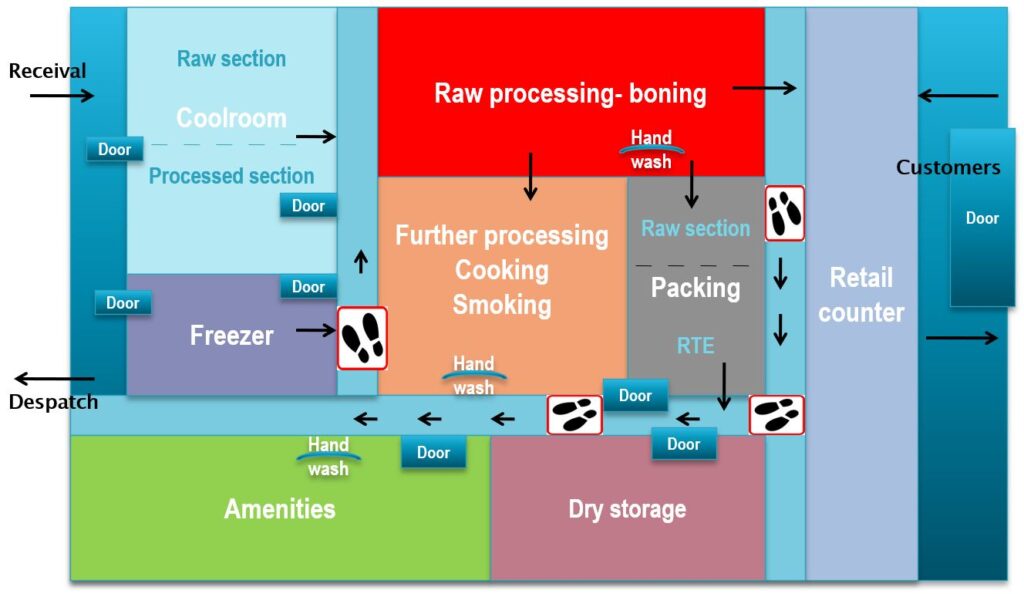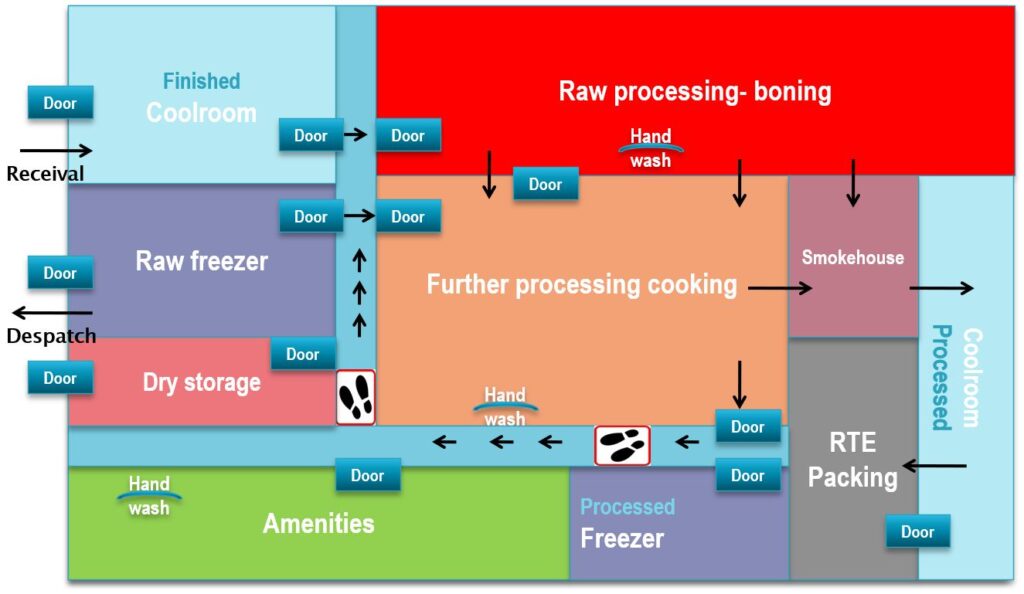Facility Design and Construction
Learn about facility design and construction requirements to control food safety risks.
Summary
- Food business facilities must meet design and construction requirements set out in the Australia New Zealand Food Standards Code, the Australian Standard for the Hygienic Production and Transportation of Meat and Meat Products for Human Consumption (AS 4696) and the Victorian Standard for Hygienic Production of Meat at Retail Premises (March 2006).
- PrimeSafe inspects new facilities to make sure they comply with the Standards. Facilities are then regularly audited.
- Make sure you design, construct and maintain your facility as required by the Standards.
Requirements overview
A well-designed and constructed facility controls food safety risks like cross-contamination.
There are construction and design requirements for food facilities in the:
- Australia New Zealand Food Standards Code
- Australian Standard for the Hygienic Production and Transportation of Meat and Meat Products for Human Consumption (AS 4696)
- Victorian Standard for Hygienic Production of Meat at Retail Premises (March 2006).
You need to understand these requirements. The information on this page is a guide only.
Facility requirements set out in the Standards include:
- Food businesses must have a clean and hygienic environment.
- Adequate space for food processing and storage is necessary.
- Floors, walls, and ceilings to be easy to clean and maintain.
- Proper ventilation systems are required to prevent contamination.
- Handwashing facilities must be available for staff.
Equipment requirements set out in the Standards include:
- Food businesses need appropriate equipment for processing, storing, and packing food.
- Equipment should be made of materials that are safe for food contact.
- Regular maintenance and cleaning of equipment are essential.
- Temperature control equipment is necessary to ensure food safety.
Construction requirements set out in the Standards include:
- Food premises must be constructed in a way that prevents pests and contamination.
- Surfaces to be smooth and free from cracks to facilitate cleaning.
- Adequate lighting is required for food processing areas.
- Plumbing and drainage systems must be designed to prevent cross-contamination.
When you apply to get a licence from PrimeSafe, we will inspect your facility to make sure that it meets the requirements set out in these Standards.
Construction and design considerations
Floor plan design
The layout of your facility has to keep raw meat separate from ready-to-eat food to avoid contamination.
See the two floor plan examples that show this separation.
Retail butcher shop facility

Further meat processing facility

Surfaces
The materials used for surfaces (walls, floors and benches) in your facility have to be suitable. Surfaces cannot react with the food or cleaning chemicals.
Surfaces have to be smooth, waterproof and resistant to rust. Don’t use materials that can trap harmful bacteria and odours and are hard to clean such as wood.
Choose light-coloured surfaces that are easy to inspect, instead of dark ones.
Surface materials for the facility need to be strong so they won’t be damaged with regular use.
Floor drainage
Keep the floor flat so water doesn’t collect in puddles.
Install drains in strategic places to get rid of water effectively.
Make sure the size of grease traps reflects the amount of product the facility processes.